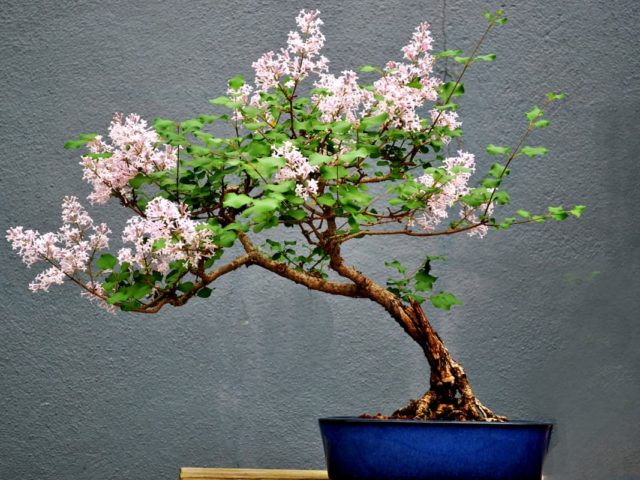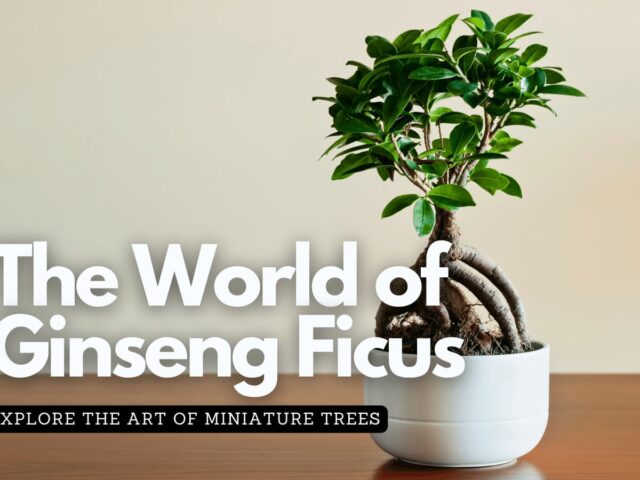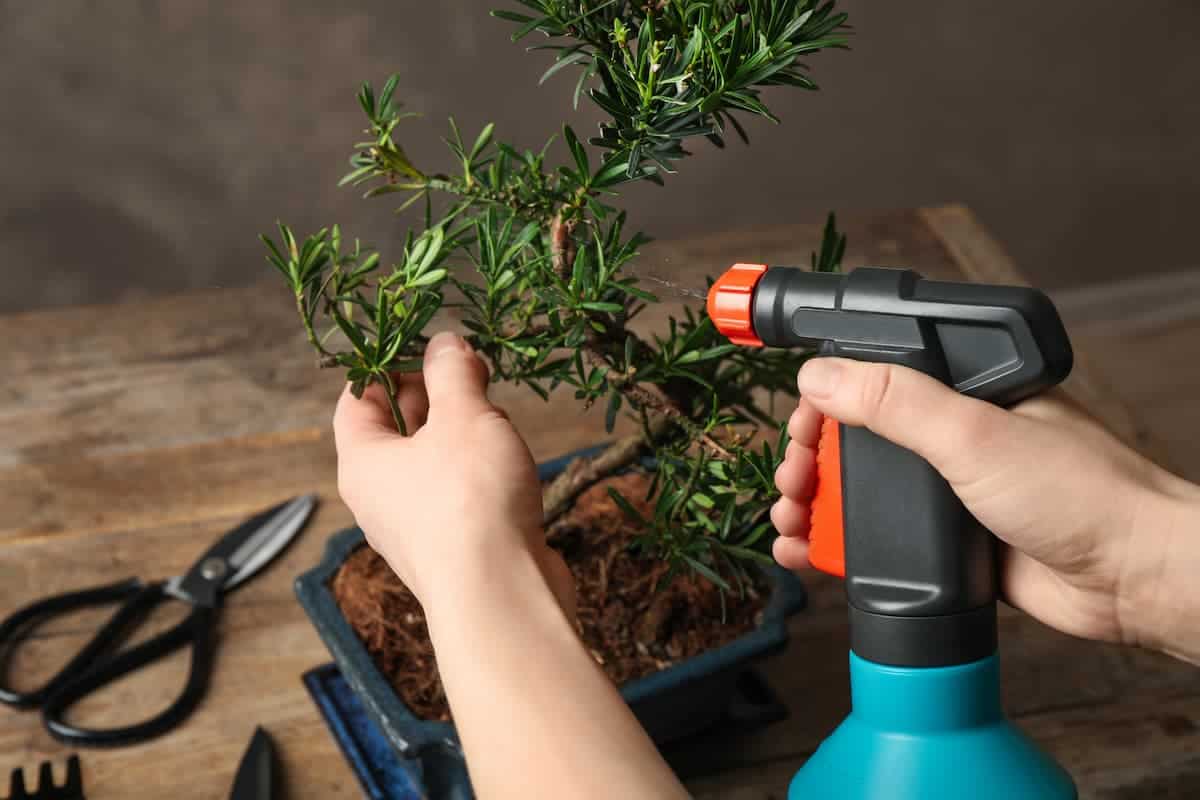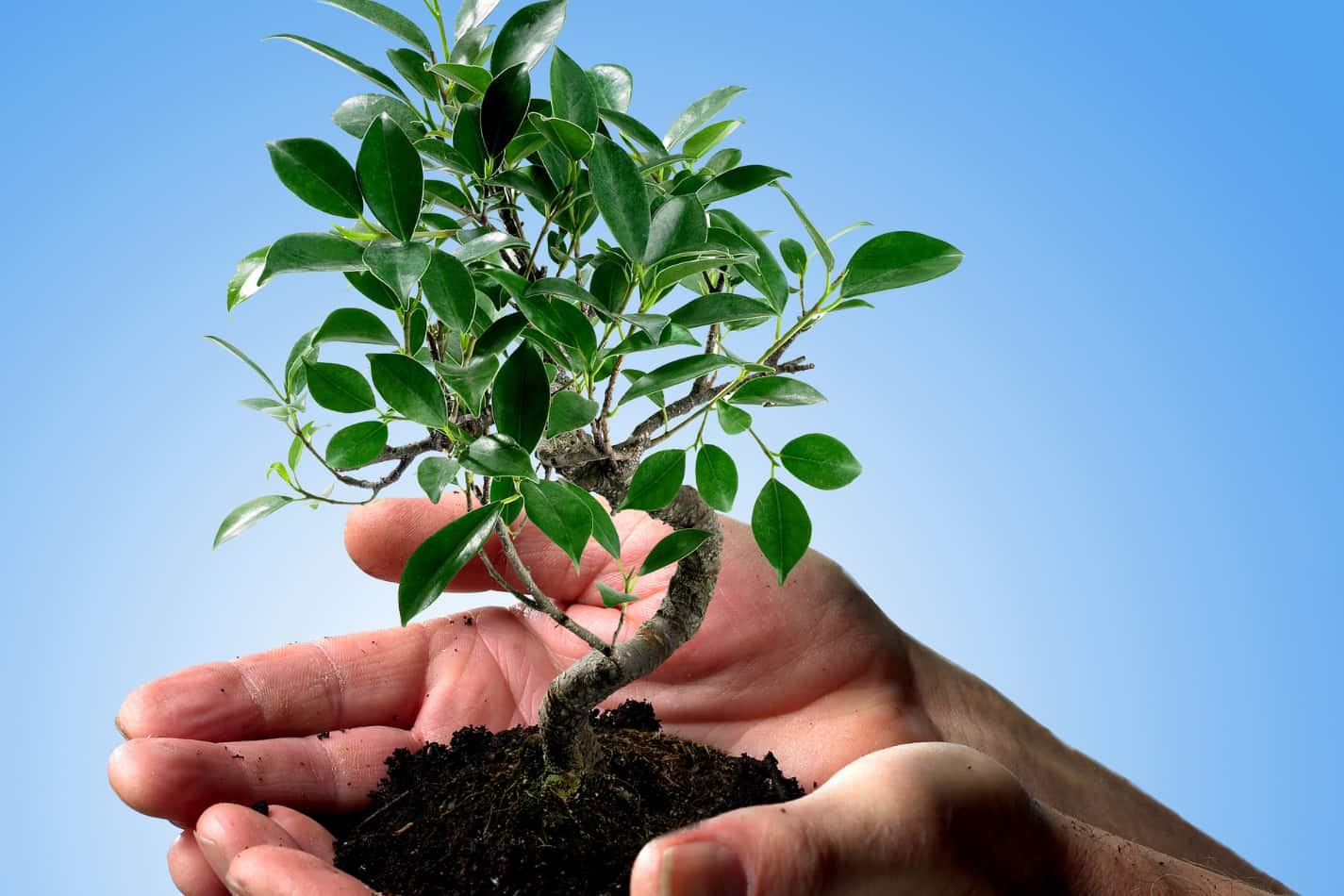That little tree is your pride and joy, you’re loving the attention you can poor into it while seeing constant result s from all the hard work you are doing.
Many first-time bonsai lovers learn the hard way that there is a limit to what you can and cannot do. One of the hardest and most painful lessons we all learn regarding bonsai trees is just how much we can water our little friends.
An average bonsai tree will only need to be watered every 2 to 3 weeks during the Spring and Summer months, with more spacing during Autumn and Winter. Overwatering wan be as bad to the bonsai health as underwatering so you need to be cautious.
More tropical trees will need to be watered every 1 to 2 weeks with a light misting, while desert trees will have to receive a lot less water, usually 3 to 4 weeks between watering.
As much as this will help you in knowing when to water your bonsai. It still brings the challenge of knowing how long your bonsai can safely go without water.
When you consider some people submerging their entire bonsai from time to time, others leave their trees entirely alone for vacations, and others that never seem to water theirs, it can be a challenge.
Watering your bonsai is not as big of a challenge and these are the things you need to know about the process!
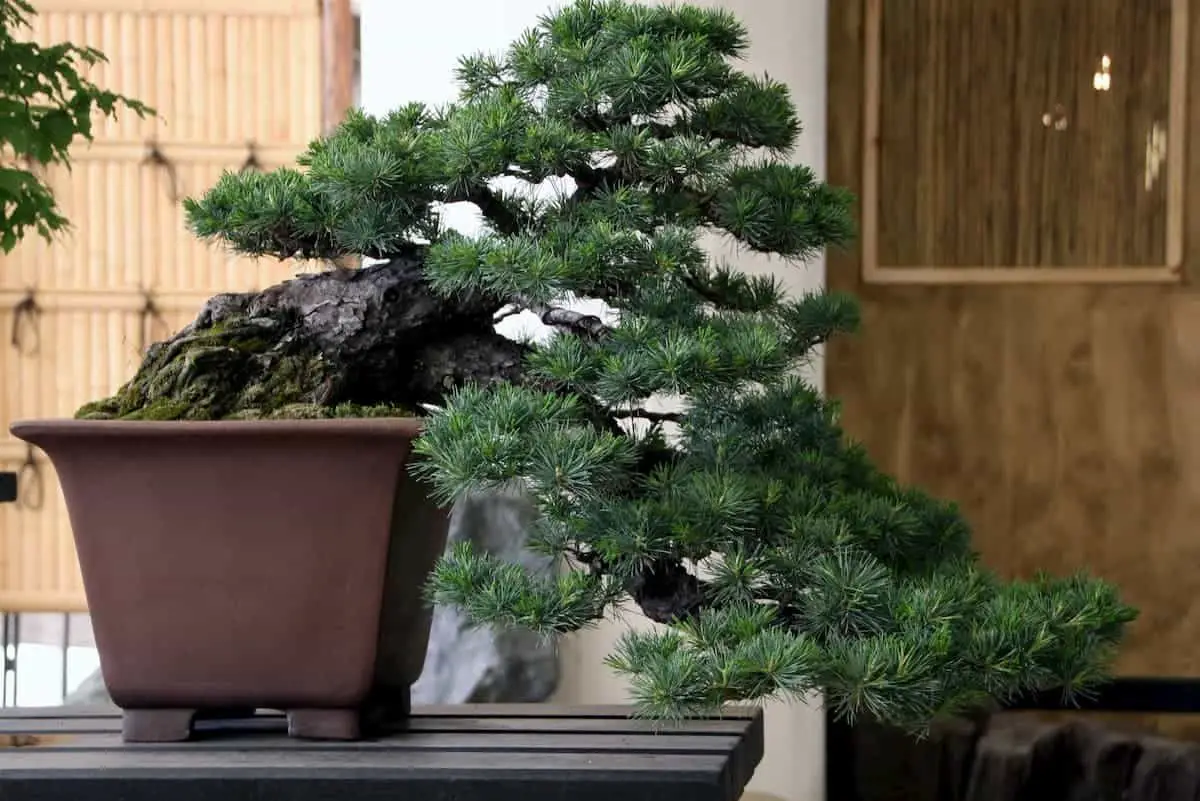
How Long Can Bonsai Go Without Watering?
Despite bonsai trees being quite sensitive in most regards, they are quite hardy when it comes to watering. Many bonsai trees that have become popular for their easy care only need water every two weeks; this means that the tree enjoys not being watered for a long period.
At an absolute max, a tree that is left in the perfect location of your home can go without water for up to three weeks. The tree will suffer some minor damage in doing this, but a bit of care and some watering will see the tree becoming healthy within a few days.
Bonsai trees are still trees and like most trees, they enjoy being away from water as well, as their systems are created to survive without water for long periods.
It is extremely important to remember that bonsai trees are not like plants, plants will almost immediately start looking better once the water has been added.
Bonsai trees will take several days to show their love for the water you added upon your return from your vacation.
Don’t expect the tree to suddenly look healthy after only a day or two, it may take up to two weeks for the tree to return to its previous healthy self.
Bonsai love is about patience as much as constant care, letting the tree do what it needs to do is just as important as anything else.
What is Bonsai Immersion Watering?
Now that we know how long a tree can go without water it may be important to know how much water a bonsai can receive at one single time without dying.
Many bonsai owners place their trust in a friend that inevitably ends up forgetting to water that one plant. This is fine, we all make mistakes but if you went on a month-long trip around the country you may need to know how much water you can add to bring life back.
Immersion watering is the answer to a bonsai tree that has become nothing but a husk of its former self, with some preferring to take the tree out of the pot entirely. The goal being to add water to a bucket or sink with water until about one inch up the trunk of the tree, keeping the pot and tree in the water until no more bubbles are coming up.
This should not be done regularly and if you do need to do it a lot it is a clear sign that the tree needs to be repotted into a larger pot.
For those wondering, when you remove the tree from a pot to do immersion watering you will have put the roots under the water, waiting until the ball of roots stops bubbling, then planting the tree in a brand-new pot.
How Do You Keep the Bonsai Watered When Away from Home?
We all love our homes and our plants that we are growing in them, usually, but taking a break and going somewhere to get away from it all can be extremely helpful.
This trip may take quite a while and while you can accept that some damage may be done when you aren’t there to provide constant care, you may want to stop the bonsai from going entirely dry.
There are two ways to keep your bonsai watered when you are away, installing a slow drip to provide water for several weeks or better, having a friend come into the water the tree.
It may seem odd but there is no substitute for watering your bonsais than having a friend come in to do it for you. Your friend can tell you what the tree looks like, accurately gauge which trees are healthy, and measure out exact amounts that may be impossible to do otherwise.
Slow dripping is a solution if your friend can’t come in every time the trees need watering but cannot replace someone there to water the plants.
Slow dripping does not provide enough water and can cause the soil to become compacted and hard in the same way that constant channels of water in your garden would harden the soil there.
How Do the Seasons Change How Much Water the Bonsai Gets?
Every season has a different effect on the plants that we love, with many bonsai owners mistakenly thinking that the trees will be fine during the winter months owing to the tree being inside.
This is not true, and the bonsais need to undergo their usual seasonal changes to continually grow. There are a lot of things that go on in your house that will affect the growth of the trees through the seasons.
Knowing what effects your normal household living will have on the tree and what you’ll need to keep an eye on will allow your tree to stay healthy even when you think it might be impossible.
Summer/Spring
The best time to do a lot of things with your tree, are the seasons when your tree will grow the most and you will most likely not be using any artificial temperature modulation.
These two seasons are also the easiest to maintain your bonsai as it will want to constantly grow and become a healthy tree, we all want as a part of our world.
During these seasons you will need to water most bonsai trees every two to three weeks, adding a bit of extra water after you have repotted, pinched, or wired the tree.
All of these are stressful things you will do to your tree that will make it slightly stressed, giving it some water will help slightly to let it grow into everything you need to do.
However, it is important to tightly control the amount of water you are adding to your bonsai each time, as adding too much now will cause several problems to appear in your tree that can be hard to fix.
Winter/Autumn
These are the seasons that many people make the mistake of just continuing like normal for the watering of their trees.
Indeed, it is during these seasons that you will have to become quite selective about how much you are watering the tree, further you will need to check the location of your tree quite often.
You will need to water most bonsai trees only every 3 to 4 weeks during these seasons, however, you will be facing the problem of dry air.
Many people use heaters, air conditioning, and other ways of heating their homes during these seasons.
Causing the air to be constantly dry, which can have an extremely negative effect on your tree, as bonsai trees prefer to have humid air.
To overcome this, one sprit of water onto the leaves in the morning can help but a much better solution will be to create a bed of river rocks.
By getting a slightly larger, flat pan that you can layer with rocks, placing the bonsai pot in the middle of it all, and filling it with water every day you can create a humid environment for your bonsai.
Throughout the day as the water in the pan evaporates it will create a naturally humid environment for your bonsai to grow in.
What Are the Top Five Signs That You Are Watering Too Much?
As much as we read and try to learn mistakes are inevitable, with many people overwatering their bonsai simply because they may have forgotten when the last time was, they added some water.
Causing many trees to be overwatered as they experience the damage of too much water over a month-long period.
Knowing what the symptoms of overwatering are will help you stop yourself; many experienced bonsai owners can instantly see these and diagnose what is wrong with a tree. These are the five most obvious signs you will have for your bonsai being over watered.
Over-Damp Soil
The soil that your bonsai is growing in should be soft, and easy for the plant to grow in, however, it should not be constantly moist.
The soil should be slightly soft, but have a dry crust or simply loose dry dirt on the top. This means that the soil is not too wet but also that it is not too hard for the roots to grow in.
Brittle Leaves
There are several types of brittle leaves, however, when you have watered the plant too much the leaves will be healthy and green looking but extremely brittle when you handle them.
This is owing to the leaves having too much water in them to be perfectly healthy. When bonsais have too much water they tend to push all the extra water to their leaves, right up until the tree drowns in the water.
Mold at the Base
Mold is not a friend to any plant owner, mold usually only grows on things that are dead or decomposing.
This is why you should ensure that there is no mold growing at the base of your bonsai tree, as this is a sign that the tree is dying.
Once you see mold it is a good idea to research how to safely get rid of it and to stop watering the tree to allow it to easily and safely continue to grow.
Soft & Black/Brown Leaves
Other than leaves that are too brittle to even the slightest touch the leaves will also be too soft and start turning brown or black.
This will not be the type of black and brown leaves dying off for the autumn season either.
Leaves that are turning brown from too much water will usually look like they are rotting on the tree itself.
Root Rot
The point where it is close to being too late to save the tree with overwatering is when root rot starts setting in.
As the roots are the main point where the tree gets most of its nutrients from the roots rotting will usually mean death for the plant.
An experienced bonsai owner and grower may be able to stop it from happening, however, the first step will be to uproot the plant and start working on healing the roots.
What Are the Five Top Signs That You Are Not Watering Enough?
There is an opposite to giving too much water and many people fall into this trap once they have had their first real scare after giving too much water.
Many bonsai owners end up not giving enough water to their trees, which is a fast road to causing the plant to become starved for water.
This caused more long-term visible damage as a lack of water can cause scarring on the trunk of your tree.
These are the five top signs that you are not giving enough water, and attention, to your bonsai tree.
Hard Soil
There are many ways to get hard soil, but the fastest way is by allowing the soil to get too hard, then watering it, then allowing it to compact again.
This leads to a soil that is almost impossible for the roots of your bonsai to grow in.
As you continue to not give water in the right way the soil also becomes thirsty, compacting, and almost rock-like.
Dry Brittle Leaves
The leaves on your tree should get dry and brittle once the seasons change, however, if your tree has new leaves that sprout and then only a day or two later, they fall off or go dry while still on the tree you have a problem.
Many bonsai owners ignore this obvious sign, thinking that it is seasons changing, even when they are still in the middle of spring and summer.
Shrunken Trunks
As the tree starts saving up all the water it can the trunk and branches will go empty, next the branches might go dry, the last sign you will get is the trunk shrinking.
You can see this happening by bark falling more often and the tree seemingly losing some mass, this is a direct visual sign that there is no more water in it.
Dry Roots
If you are repotting the tree and the roots are dry and brittle you should beware, this is an early sign that the tree needs to be watered slightly more.
Roots, especially small ones, should always be soft and springy. Which grow easily and comfortably through the soil, pushing everything away as they grow.
Dry roots should always be heeded, and immediate attention should be given to how you are taking care of your bonsai.
No New Growth
After every watering session for a few days afterward you may see a few new sprouts coming out, however, if these new sprouts die out or there are no new sprouts at all in the early spring season you need more water.
This is a sign that the tree is first restoring the water inside itself, before using any of its low energy reserves to grow new leaves.
Just be sure you aren’t expecting growth in the middle of winter, the tree might be hibernating.
Final Thoughts on How Often Should a Bonsai Be Watered
There are many things you can do wrong while watering your bonsai tree, the general rule of thumb is that you should only water at certain times throughout the season.
It is important to remember that a fully grown bonsai is a low-maintenance plant, it just needs a lot of love and cares to get to that point.
Just be sure that when you are watering your bonsai it isn’t floating around the pot, it may just float away from you!
If you are just learning about bonsai trees and looking to purchase high quality trees that will likely live longer than you then I would highly suggest checking out Bonsai Boy Trees as they are a long lasting New York business that provides trees for all price ranges!


